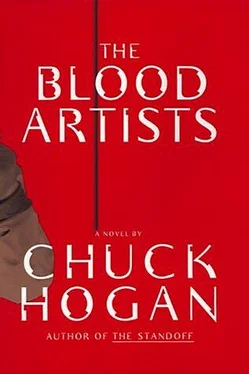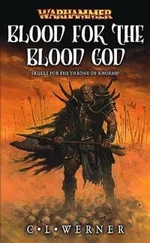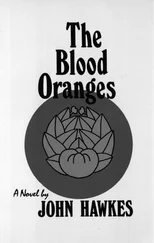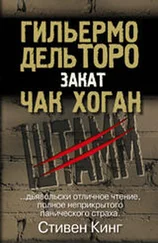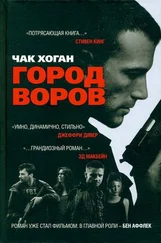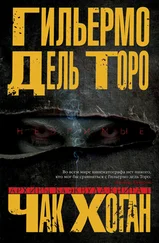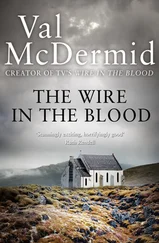Advise: Biohazard 4.
There was no international alert, as we agreed that the outbreak was adequately isolated, at least for now. In any event, it was always preferable to establish the disease etiology first, rather than face unanswerable questions that could lead to misinformation and public panic later. Fear was the most virulent disease of all.
Peter backed the Pinzgauer out of the clearing into what became our retreat, abandoning Kaunda’s infected 4x4 inside the camp and pocketing the keys. I designated a barrier zone between the two areas, setting out for us a large biohazard box, packets of sterile gloves, and pans and brushes and jugs of Pheno virucidal disinfectant.
We refit Kaunda’s dispensary inside the camp, fashioning an operating theater out of an examining table and pump sink that would service autopsies as well. Then we set up shop in the market shanty and began prioritizing the afflicted. The asymptomatic population assembled behind us in a desultory line along the quarantine border, watching us administer to their sick.
Peter broke away around midnight to do the PCR work, and ran the genetic fingerprint of Jacqueline Moutouari’s virus through the database at the CDC. It came back exactly as we had feared: UNK, or Unknown. Whatever was eating Jacqueline Moutouari, it was not the smallpox virus. It was something not yet encountered by human medicine.
I visited her later. She was lying on an air mattress in Kaunda’s personal hut, behind the dispensary, feverishly reciting what sounded like a child’s prayer. The suppurating pustules had merged upon her chest and legs. I could only wait for more antivirals to arrive, in the vain hope that one might click.
I returned exhausted to Peter under the roof of the marketplace.
“The sores have merged,” I said. “She’s dying.”
He immersed his instruments in a pan and ceded the patient to me. “I’m finding tumors in post,” he said, meaning postmortem examinations. “It’s a retrovirus.”
I slid my gloved hands into a bowl of cleansing formalin. Retroviruses were RNA viruses, more complicated than regular DNA viruses, and responsible for a rogue’s gallery of diseases including various viral cancers, leukemia, and immune-deficiency afflictions such as AIDS.
“The girl’s is different,” I said. “Hypotaxia. Range of sores. The symptoms vary victim to victim. There’s something to that.”
Peter nodded. As he started back to the dispensary I heard again what I had previously taken to be the pounding of my own pulse inside my head. I called after him. “The drums,” I said.
Peter looked to the high trees, listening. “Pygmies,” he said before continuing on.
The CDC team arrived by Ford Explorer and Peugeot station wagon at noon the next day. They wore full biohazard regalia and brought with them nearly five hundred pounds of equipment, including surgical supplies and diagnostic apparatus, body bags, nylon restraints, a thirty liter autoclave, generators, refrigerators, and small transport freezers. The expression in their eyes as they stood among the dying reimpressed upon me the macabre rage of the disease.
Following a short briefing, we left them to string up IV feeds and hang mosquito nets around the trauma center while Peter and I retreated to the barrier point on the edge of camp. We disinfected our suits with a painstakingly thorough Pheno scrub bath, before ripping them open and pushing back the hoods. The pores of my cheeks tingled, exposed to the free-flowing air. We disposed of the suits in biohazard and changed gloves and proceeded to the Pinzgauer outside camp. I broke open a waxed box of distilled water and downed half of it, pouring the rest into a bowl and splashing it on my needy face. Peter, a claustrophobic, strode in wide, relieved circles around the vehicle, happy to be out of his suit. I sat in the open side door of the Pinzgauer and savored the muggy air.
Neither of us had ever seen a virus so devastating as this one was. No one had. A virus with such a high degree of pathogenicity traditionally lacked virulence, just as, conversely, a less debilitating virus achieved wider penetration by virtue of its having a greater number of living, functioning carriers. This African bug would likely burn through the camp inhabitants within one week’s time.
All of this went without saying. We still did not know what the virus was or, more important, exactly how it was transmitted. After the meal, Peter waved a mosquito away from his head, and both of us looked at each other with a surly alertness. Silently we withdrew into fresh contact suits.
At dusk anything that could be used as a weapon was confiscated in a hut-by-hut search. The virally induced psychosis had manifested itself in varying degrees among the afflicted, from mere confusion, to stupor, to outright dementia. Only a few became violent and had to be restrained. Psychotic episodes were staggered with brief periods of lucidity, marked by despair and expressions of terror, leading invariably to the final, catastrophic stage of the disease.
That night Peter completed a field assay involving a T cell survey of ten patients in the prodrome, or preliminary, phase of the disease. T cells are the white blood cells that make up the vanguard of the human immune system response. Peter’s field test — a simple tally of cells on a microscope slide — found the highest T cell count of the ten prodrome cases to be thirty-four, which was demonstrably low, in fact well below the CDC criteria for establishing a diagnosis of AIDS.
By the end of the second day, thirty-seven more were dead, fifty-one suffered advanced cases, and thirty-two were entering the prodrome phase with severe flulike symptoms. PCR analysis had revealed significant differences in the genetic sequences of the viral strains infecting the population. We were dealing with something unusual, a virus possessed with extraordinary mutative properties.
The CDC team submitted lymphatic samples once daily for PCR screening and adopted a buddy system in order to monitor one another for disease symptoms or fatigue. The virus was almost certainly airborne, and a slipped scalpel or torn glove compromising a suit could lead to a fatal contamination.
Later that evening I began to hyperventilate inside my suit and had to be relieved. A few minutes away from trauma I regained my composure, and on my way out of camp I checked in again on Jacqueline Moutouari. Bleeding had erupted beneath her skin. The sores were now most profound upon her face and torso, many broken open and draining a mustard-yellow discharge. Her decaying body was ridding itself of nutrients and fluids faster than could be replenished. Any attempt at dressing her wounds resulted in cries of pain. The nine-year-old was in agony. I stood over her, daubing some garamycin into her half-open, blood-filled left eye and gently holding her hand. There was no response now, no squeeze or gurgle or twitch of the eye. Nothing had worked. I wandered out to Kaunda’s car on the edge of camp and lay back on the passenger seat. I could not fathom the life that was going along blithely back in Atlanta, throughout America and all the world. It was as though the airports we had passed through on the way to this virus had, upon our takeoff, turned to dust. I slept there, fully suited, for two hours.
Peter woke me before dawn and handed me a flashlight. I accompanied him down the dark road, past the camp, ending around a long curve at a natural cave opening in the center of a steep, grassy rise. He approached the cave’s wide, dark mouth and stepped inside.
I followed. The walls and the ceiling had been widened and reinforced, our flashlights illuminating work grids painted onto the surface, continuing deep into the dark earthen belly. A fine dust swirled in the bright cones of our beams.
Читать дальше
